The Ten Best Chryslers of the Past 25 Years
For the Ten Worst Chryslers of the past 25 Years, click here. These are in no particular order.
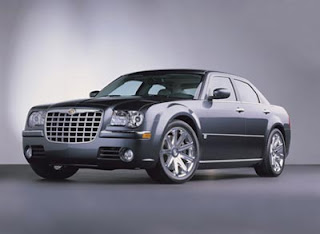 Chrysler 300/Dodge Charger/Dodge Magnum (2005-present) The LX cars are probably the best cars that Chrysler has ever built. They’re big, stylish, bold, and are available with optional 6.1 liter 425-horsepower Hemi V8s. Plus, they have high-tech features like independent rear suspension (on a chassis derived from the Mercedes-Benz parts bin), five speed automatics, available all wheel drive, and more. The cars are also very popular with tuners; one of my favorite upgrades is the Bentley-style grille, but another common one is Lamborghini-style scissor doors. The platform is apparently very flexible, because a modified version of it will underpin the Dodge Challenger coming out in year or two. Further evidence of its success is the fact that GM and Ford are either producing, or considering producing, large RWD competitors to the Chrysler LX cars (Pontiac G8, Chevy Impala, and Ford Interceptor, for example). The only chink in their armor is an interior that doesn’t match the promise of their powertrains, chassis, or exterior style, but Chrysler is aware of the problem and is working on it.
Chrysler 300/Dodge Charger/Dodge Magnum (2005-present) The LX cars are probably the best cars that Chrysler has ever built. They’re big, stylish, bold, and are available with optional 6.1 liter 425-horsepower Hemi V8s. Plus, they have high-tech features like independent rear suspension (on a chassis derived from the Mercedes-Benz parts bin), five speed automatics, available all wheel drive, and more. The cars are also very popular with tuners; one of my favorite upgrades is the Bentley-style grille, but another common one is Lamborghini-style scissor doors. The platform is apparently very flexible, because a modified version of it will underpin the Dodge Challenger coming out in year or two. Further evidence of its success is the fact that GM and Ford are either producing, or considering producing, large RWD competitors to the Chrysler LX cars (Pontiac G8, Chevy Impala, and Ford Interceptor, for example). The only chink in their armor is an interior that doesn’t match the promise of their powertrains, chassis, or exterior style, but Chrysler is aware of the problem and is working on it.
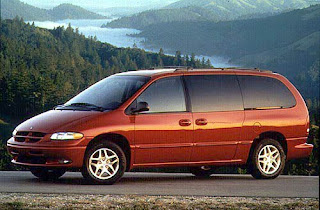 Dodge Caravan/Plymouth Voyager/Chrysler Town & Country (1996-present) While Chrysler invented the modern minivan in 1984 and spawned an entire segment of copycats, and I give them credit for that, I cannot in good conscience rank the 1984-1995 original minivans among Chrysler’s best efforts (severely underpowered, underdeveloped transmissions, sub-par fit and finish). However, the 1996 models ushered in the vans’ first complete redesign, which meant a new platform, new shape, and new interior. Even though the 1996 vans look similar to 2007s, there was a pretty major mid cycle enhancement in 2001, and the vans were continually improved each year. These vans have deservedly proven to be a cash cow for Chrysler. The minivans also pass the “imitation is the sincerest form of flattery” test; Honda’s and Toyota’s vans weren’t successful until they finally decided to copy Chrysler’s formula.
Dodge Caravan/Plymouth Voyager/Chrysler Town & Country (1996-present) While Chrysler invented the modern minivan in 1984 and spawned an entire segment of copycats, and I give them credit for that, I cannot in good conscience rank the 1984-1995 original minivans among Chrysler’s best efforts (severely underpowered, underdeveloped transmissions, sub-par fit and finish). However, the 1996 models ushered in the vans’ first complete redesign, which meant a new platform, new shape, and new interior. Even though the 1996 vans look similar to 2007s, there was a pretty major mid cycle enhancement in 2001, and the vans were continually improved each year. These vans have deservedly proven to be a cash cow for Chrysler. The minivans also pass the “imitation is the sincerest form of flattery” test; Honda’s and Toyota’s vans weren’t successful until they finally decided to copy Chrysler’s formula.
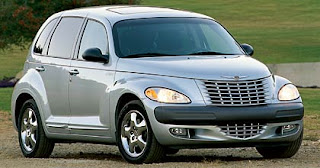 Chrysler PT Cruiser (2001-present) Although the PT Cruiser is getting a little long in the tooth, when it was introduced, it looked like nothing else on the road. It drew waiting lists and dealer markups on what was basically a taller version of the Neon chassis. The interior managed to strike an upscale, art deco tone with body-colored accents and nicely-grained plastics. The car’s 2006 refresh cheapened the interior to knock it down to the level of other Chryslers, but the car is an icon and has likely exceeded all of its original sales goals. My mom wanted one when they first came out, but my parents never ended up getting one; they wound up with a 2004 SSR eventually instead.
Chrysler PT Cruiser (2001-present) Although the PT Cruiser is getting a little long in the tooth, when it was introduced, it looked like nothing else on the road. It drew waiting lists and dealer markups on what was basically a taller version of the Neon chassis. The interior managed to strike an upscale, art deco tone with body-colored accents and nicely-grained plastics. The car’s 2006 refresh cheapened the interior to knock it down to the level of other Chryslers, but the car is an icon and has likely exceeded all of its original sales goals. My mom wanted one when they first came out, but my parents never ended up getting one; they wound up with a 2004 SSR eventually instead.
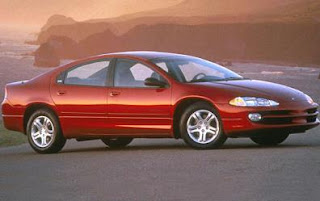 Dodge Intrepid/Eagle Vision/Chrysler Concorde/LHS/New Yorker (1993-2004)
Dodge Intrepid/Eagle Vision/Chrysler Concorde/LHS/New Yorker (1993-2004)
These cars made their debut under much hype at a time that Chrysler was in yet another financial crisis. They received much adoration and praise from customers and the automotive media. They were the first Chrysler vehicles to feature a “cab forward” design, which pushed the wheels to the corners of the car and the base of the windshield forward, partially over the engine. The result was a more aerodynamic, more modern look and increased passenger space. Having the wheels at the corners also improved handling, and the cars had extremely competitive engine offerings for their day. A close friend owned a 1995 Intrepid ES that he bought as a used demo model, and he put nearly a quarter million miles on it. Sure, by the end of its life with him, plenty of things stopped working, but it took a whack into a raised concrete median to finally bend the suspension and motivate him to sell the car. Last I heard, it’s still on the road with its new owner.
 Dodge Stealth (1991-1996) The Dodge Stealth wasn’t really a Dodge, but rather a rebadged Mitsubishi 3000GT sport coupe. On paper, the car was pretty awesome, especially in the top-level R/T guise: 300 horsepower, twin turbo, 5-speed manual, all wheel drive, four wheel steering, active aerodynamics, and tunable suspension. The Stealth carried Dodge’s performance flagship banner admirably until Viper production began. The only downside with the car, other than high insurance premiums for the twin turbo models, was the extreme weight that all of the techno-goodies added to the car. Still, they were really neat cars, if perhaps a little boy racer-ish in a 1990’s Pontiac sort of way.
Dodge Stealth (1991-1996) The Dodge Stealth wasn’t really a Dodge, but rather a rebadged Mitsubishi 3000GT sport coupe. On paper, the car was pretty awesome, especially in the top-level R/T guise: 300 horsepower, twin turbo, 5-speed manual, all wheel drive, four wheel steering, active aerodynamics, and tunable suspension. The Stealth carried Dodge’s performance flagship banner admirably until Viper production began. The only downside with the car, other than high insurance premiums for the twin turbo models, was the extreme weight that all of the techno-goodies added to the car. Still, they were really neat cars, if perhaps a little boy racer-ish in a 1990’s Pontiac sort of way.
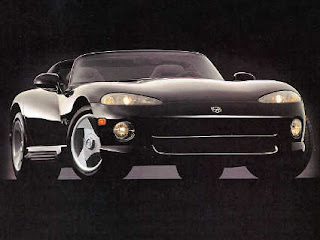 Dodge Viper (1992-present) What can be said about the Viper that hasn’t been said already? For a while, it was the most powerful production car sold in the US. It made its debut with 400 horsepower, no air conditioning, no glass side windows, no ABS, and functional side exhaust at a time when the Corvette was just reaching the 300 horsepower mark. The 2008 version, once it finally goes on sale, will produce 600 horsepower! Visually, I prefer the first version, which had a much more aggressive shape than did the toned-down second generation models (which debuted in 2003). Carroll Shelby, though I think he’s a huckster in many ways, had a hand in the development of the first Viper, and he truly did make it a spiritual successor to the Cobras of the 1960s.
Dodge Viper (1992-present) What can be said about the Viper that hasn’t been said already? For a while, it was the most powerful production car sold in the US. It made its debut with 400 horsepower, no air conditioning, no glass side windows, no ABS, and functional side exhaust at a time when the Corvette was just reaching the 300 horsepower mark. The 2008 version, once it finally goes on sale, will produce 600 horsepower! Visually, I prefer the first version, which had a much more aggressive shape than did the toned-down second generation models (which debuted in 2003). Carroll Shelby, though I think he’s a huckster in many ways, had a hand in the development of the first Viper, and he truly did make it a spiritual successor to the Cobras of the 1960s.
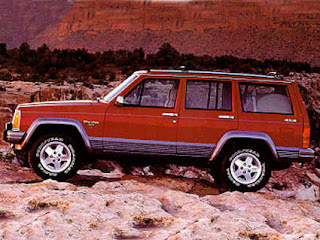 Jeep Cherokee (1984-2001) Jeep misses the XJ Cherokee so much that it’s now tried three times (unsuccessfully) to replace it. First, the Liberty was supposed to be its replacement; it turned out to be more of a chick car than a credible Cherokee successor. Next, the Commander became a caricature of the Cherokee’s styling, except it lacked the short overhangs and clean proportions of the original. Finally, the Patriot has a lot of the Cherokee’s boxiness, and looks better than the Commander, but is based on a front-wheel drive car chassis. The XJ Cherokee had a huge following and was the vehicle that started the four door compact SUV craze. Sales grew every year, and the model survived long past its original cancellation date. In fact, they’re still built in China.
Jeep Cherokee (1984-2001) Jeep misses the XJ Cherokee so much that it’s now tried three times (unsuccessfully) to replace it. First, the Liberty was supposed to be its replacement; it turned out to be more of a chick car than a credible Cherokee successor. Next, the Commander became a caricature of the Cherokee’s styling, except it lacked the short overhangs and clean proportions of the original. Finally, the Patriot has a lot of the Cherokee’s boxiness, and looks better than the Commander, but is based on a front-wheel drive car chassis. The XJ Cherokee had a huge following and was the vehicle that started the four door compact SUV craze. Sales grew every year, and the model survived long past its original cancellation date. In fact, they’re still built in China.
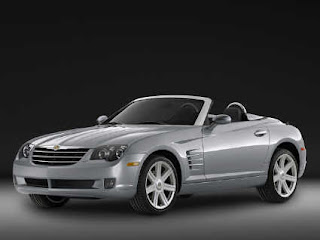 Chrysler Crossfire (2004-present) The Chrysler Crossfire was more or less a re-bodied version of the R170 (1997-2004) first generation Mercedes-Benz SLK roadster. The interior (including instrument panel) is almost identical between the two cars, but the Crossfire has more silver-appearing parts while the Mercedes went for a wood look. The Crossfire SRT-6 even had a 330 horsepower AMG-built engine. The looks weren’t bad – certainly better than the Sebring that appears to be inspired by it – and it is a great way to get a Mercedes (more or less) for bargain prices. Unfortunately, they are very slow sellers and this model’s days are numbered.
Chrysler Crossfire (2004-present) The Chrysler Crossfire was more or less a re-bodied version of the R170 (1997-2004) first generation Mercedes-Benz SLK roadster. The interior (including instrument panel) is almost identical between the two cars, but the Crossfire has more silver-appearing parts while the Mercedes went for a wood look. The Crossfire SRT-6 even had a 330 horsepower AMG-built engine. The looks weren’t bad – certainly better than the Sebring that appears to be inspired by it – and it is a great way to get a Mercedes (more or less) for bargain prices. Unfortunately, they are very slow sellers and this model’s days are numbered.
 Plymouth/Chrysler Prowler (1997-2002) The Prowler was a concept car come to life. It kept nearly all of the concept’s good looks, except some compromises had to be made for the Prowler to be street legal and meet current safety standards. Although the front bumpers were a little awkward, many owners simply removed them. The car also had many aluminum components in the chassis. The only real problem with the Prowler was its V6 powertrain, which didn’t quite line up with the big promises its fantastic appearance made. This was addressed somewhat in later years with an upgraded engine, but imagine how awesome this car would have been with a Hemi. Only 11,702 were produced during a five year run.
Plymouth/Chrysler Prowler (1997-2002) The Prowler was a concept car come to life. It kept nearly all of the concept’s good looks, except some compromises had to be made for the Prowler to be street legal and meet current safety standards. Although the front bumpers were a little awkward, many owners simply removed them. The car also had many aluminum components in the chassis. The only real problem with the Prowler was its V6 powertrain, which didn’t quite line up with the big promises its fantastic appearance made. This was addressed somewhat in later years with an upgraded engine, but imagine how awesome this car would have been with a Hemi. Only 11,702 were produced during a five year run.
 Dodge Stratus/Chrysler Cirrus/Plymouth Breeze (1995-2006) The so-called “cloud cars” were Chrysler’s midsize sedan offerings, and were the third installment of the cab forward push at Chrysler Corporation (following the larger LH cars and the smaller Neon). Other than meteorological names, the cars also had pleasing designs inside and out – the wheels went to the edge of the fenders, even in lower trim levels, the dashboard had pleasant shapes, and they looked unlike any other car on the road in 1995 (well, the prominent grille did remind me of a 1992 Pontiac Grand Am). The cloud cars’ styling later manifested itself in the 1996 minivans, and looked pretty good on those as well.
Dodge Stratus/Chrysler Cirrus/Plymouth Breeze (1995-2006) The so-called “cloud cars” were Chrysler’s midsize sedan offerings, and were the third installment of the cab forward push at Chrysler Corporation (following the larger LH cars and the smaller Neon). Other than meteorological names, the cars also had pleasing designs inside and out – the wheels went to the edge of the fenders, even in lower trim levels, the dashboard had pleasant shapes, and they looked unlike any other car on the road in 1995 (well, the prominent grille did remind me of a 1992 Pontiac Grand Am). The cloud cars’ styling later manifested itself in the 1996 minivans, and looked pretty good on those as well.




